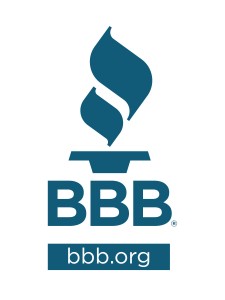 When you begin to consider using social media marketing for your business, the choices can seem overwhelming. There are so many social networks out there, and will the time needed to do all of them really pay off in the long run? How do you choose what makes sense for your business?
When you begin to consider using social media marketing for your business, the choices can seem overwhelming. There are so many social networks out there, and will the time needed to do all of them really pay off in the long run? How do you choose what makes sense for your business?
Here’s a process you can use to help you decide and then use what you choose effectively:
- Write down your goals for social media marketing: Are you seeking new customers, or looking to grow your mailing list? Are you interested in finding people that are interested in a business opportunity? By taking some time to consider your goals, your subsequent actions will be a lot more focused.
- Define your target market: You must understand who you want to reach if you’re going to find them online. So spend some time narrowly defining your target market…their ages, education, income level, interests, etc. Then you can go and find them!
- Figure out where your target market spends time online: Once you know who you want to reach, then do some research to find out where that target market spends time online. Facebook is a great place to find consumers, but if you’re looking for people interested in a business opportunity you may do better on LinkedIn. If you want to reach a more niche audience, perhaps the people you want to reach are on a more specialized network like fashionspace.com or wahm.com. Don’t just assume that the “biggies” are best for your business. Take the time to do the research so you know which network will help you reach the people you are looking for.
- Decide how much time you can devote daily: This is also very important. If you’re a solopreneur, you’ve got a lot to do already, and adding the maintenance of dozens of social networks to your plate means that you won’t do anything well. Instead, narrow your focus to one or two social networks based on the daily amount of time you can invest. Remember, doing one social network well is better than spreading yourself too thin and leaving no impression on people at all.
- Learn the social network before jumping in: Once you’ve got a short list of social networks that would work for your business, spend some time researching them. Talk to other business owners that have used them, and ask about their results and best practices. Read the terms of service of the network so you’re clear on what you can and cannot do as a business on the social network. And take some time to observe how others use the network at a personal level. If most people use the social network personally, you want to be sure your understand the norms and cadence of the interactions there, so you don’t come in like a bull in a china shop, alienating the very people you want to reach.
- Commit daily: Once you establish your presence on the social network, realize it’s a daily commitment. Especially in the beginning as you’re building your momentum, it’s absolutely critical that you spend time every single day connecting with the people on your social network. Share great content, talk to people, answer questions. It’s the giving of yourself each day that builds the engagement that leads to new business.
- Add your social networks to your offline marketing: Now that you’ve got an online presence, be sure to add it to your offline interactions. Add the URL of your social presence to your business cards and signage. Invite every customer to connect with you online. Let your in-person business contacts know about special “online only” offers that you provide online to encourage them to join you there. The beauty of the online presence is that you can connect with people a lot more regularly than just waiting to connect in person. Be sure every person you work with is invited to join you online.
- Measure! This is perhaps the most important part of social media, and the one most often neglected by business owners. It’s not enough to set up your online presence and “feel” that things are going well. You must measure. The ultimate goal of any social presence is to convert contacts on your social networks to people that help you meet the goals you outlined in the first bullet of this article. So if you’re looking to build your mailing list, be sure you’ve got a way for people to sign up to do that, and call it out regularly on your social networks. Then measure how many people come to your sign up form, and how many get to the success page after filling it out. How many do you lose? If too many people are abandoning your form before completion, maybe you need to change your form. If your goal is to get more customers, then you should be measuring how many people are coming from your social network to your shopping page (or into your store…are you asking how they heard about you?), and then how many actually make a purchase after visiting. Google Analytics will give you a lot of this information. Make sure you’ve got it installed on your website, and are looking at the data regularly.
It’s not enough to just jump on Facebook because everyone else seems to be doing it. A measured, thoughtful approach to your selection of social media tools, and then measuring the results of your actions, will bring you much closer to your goals.
What social tools do you use? Why did you choose them? How are they working for you? Would love to read your thoughts in the comments.









![MP900321197[1]](https://dsef.org/wp-content/uploads/2011/09/MP9003211971-214x300.jpg)






